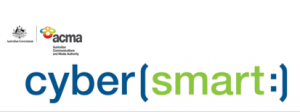This is number 3 in a series of great articles designed to put in school newsletters to keep parents informed around the latest cybersafety issues. They have been developed by  the Cybersmart team at ACMA and are available via http://www.cybersmart.gov.au/Outreach/Connected.aspx
the Cybersmart team at ACMA and are available via http://www.cybersmart.gov.au/Outreach/Connected.aspx
Schools are encouraged to copy and paste these in your school newsletter or share them online.
Protecting your child’s digital reputation
Children, especially during their teenage years, learn the importance of their reputation as a part of growing up.
Offline, a child’s reputation can be established through behaviour in the classroom and the playground, their treatment of friends, and academic, artistic or sporting achievements. Your child’s online reputation is defined by both the content they post about themselves and what others post about your child.
Tagged photos, blog posts and social networking interactions will all shape how your child is perceived online and offline. A poor digital reputation can affect friendships, relationships and future job prospects.
Children can protect their digital reputation by:
- Thinking before they post. Does everything about their life really need to be online? How might this affect them in the future?
- Setting their profile to private and checking privacy settings regularly to make sure default options haven’t changed. This will allow them to control who sees what they post online.
- Keeping an eye on photos tagged by friends. Even if your child’s profile is private, the content friends post might be available for the world to see. Some social media sites allow users to approve tags before they are attached to their profile.
If you or your child wants to talk about digital reputation issues, visit the Cybersmart Online Helpline (www.cybersmart.gov.au/report.aspx) or call Kids Helpline on 1800 55 1800.
DEECD resources can be found http://www.education.vic.gov.au/about/programs/bullystoppers/Pages/parents.aspx
Glossary:
Blog
Blog is derived from the combination of the words web and log. Blogs are virtual journals created by individuals and stored on the internet. Blogs generally consist of text and images and can appear in a chronological format. While there are dedicated blogging services, such as Google’s Blogger, many social networking services offer a blogging facility as part of their service. Many online news services now also generate blogs and encourage readers to follow them. A blog can follow a theme, for example ‘Tips on parenting a 13 year old boy’ or ‘My cat blog’, or provide a viewpoint on current news events.
Social networking
Social networking occurs via an online site where a user can create a profile and build a personal network of online ‘friends’. In the past five years, sites such as Facebook and Twitter have engaged tens of millions of internet users.
A full cybersafety glossary may be found at www.cybersmart.gov.au/glossary.aspx